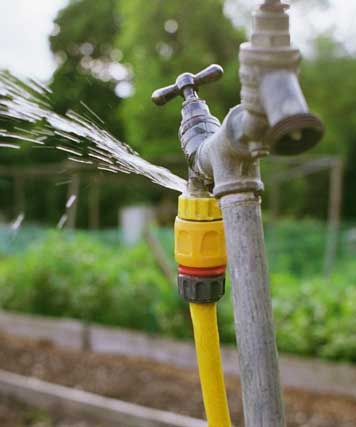Identify Hidden Water Line Leaks: Six Effective Tricks
Identify Hidden Water Line Leaks: Six Effective Tricks
Blog Article
Just about everyone is bound to have their unique idea when it comes to Leaking water lines.

Early discovery of leaking water lines can minimize a prospective disaster. Some little water leakages may not be visible.
1. Analyze the Water Meter
Inspecting it is a proven means that assists you find leakages. If it relocates, that suggests a fast-moving leakage. This means you might have a slow leakage that can also be underground.
2. Examine Water Consumption
Evaluate your water expenses and track your water intake. As the one paying it, you ought to see if there are any kind of discrepancies. If you find sudden changes, despite your usage being the same, it implies that you have leaks in your plumbing system. Remember, your water costs must drop under the exact same variety monthly. An unexpected spike in your costs suggests a fast-moving leakage.
A stable increase every month, also with the exact same habits, shows you have a slow-moving leakage that's likewise slowly rising. Call a plumber to completely inspect your residential property, particularly if you really feel a cozy location on your floor with piping beneath.
3. Do a Food Coloring Test
When it comes to water intake, 30% originates from toilets. Test to see if they are running effectively. Decrease specks of food color in the storage tank and also wait 10 mins. There's a leakage in between the container and dish if the color in some way infiltrates your bowl throughout that time without flushing.
4. Asses Outside Lines
Don't neglect to examine your outside water lines as well. Must water seep out of the connection, you have a loose rubber gasket. One little leakage can throw away bunches of water as well as increase your water expense.
5. Analyze the circumstance and also inspect
Home owners should make it a practice to inspect under the sink counters and also also inside cabinets for any type of bad odor or mold and mildew development. These two red flags suggest a leakage so punctual focus is required. Doing regular assessments, even bi-annually, can conserve you from a significant issue.
If you know your house is already old, keep a watchful eye on your heaters, hose pipes, pipelines etc. Check for discolorations and also deteriorating as many pipes and also devices have a life span. They will likewise normally wear away because of tear and use. If you believe dripping water lines in your plumbing system, don't wait for it to intensify. Call a professional plumber right now so you do not end up with a dreadful mess in your house.
Early discovery of leaking water lines can alleviate a possible catastrophe. Some small water leaks might not be noticeable. Inspecting it is a surefire means that helps you find leaks. One little leak can waste loads of water and increase your water expense.
If you presume dripping water lines in your plumbing system, do not wait for it to rise.
WARNING SIGNS OF WATER LEAKAGE BEHIND THE WALL
PERSISTENT MUSTY ODORS
As water slowly drips from a leaky pipe inside the wall, flooring and sheetrock stay damp and develop an odor similar to wet cardboard. It generates a musty smell that can help you find hidden leaks.
MOLD IN UNUSUAL AREAS
Mold usually grows in wet areas like kitchens, baths and laundry rooms. If you spot the stuff on walls or baseboards in other rooms of the house, it’s a good indicator of undetected water leaks.
STAINS THAT GROW
When mold thrives around a leaky pipe, it sometimes takes hold on the inside surface of the affected wall. A growing stain on otherwise clean sheetrock is often your sign of a hidden plumbing problem.
PEELING OR BUBBLING WALLPAPER / PAINT
This clue is easy to miss in rooms that don’t get much use. When you see wallpaper separating along seams or paint bubbling or flaking off the wall, blame sheetrock that stays wet because of an undetected leak.
BUCKLED CEILINGS AND STAINED FLOORS
If ceilings or floors in bathrooms, kitchens or laundry areas develop structural problems, don’t rule out constant damp inside the walls. Wet sheetrock can affect adjacent framing, flooring and ceilings.
https://www.servicemasterbyzaba.com/blog/how-to-detect-water-leakage-in-walls/

As an avid reader on Hacks to detect leaks, I was thinking sharing that piece of content was a good idea. Are you aware of another individual who is in the market for the subject? Take a moment to promote it. Thanks a bunch for your time. Kindly come by our website back soon.
Source Report this page